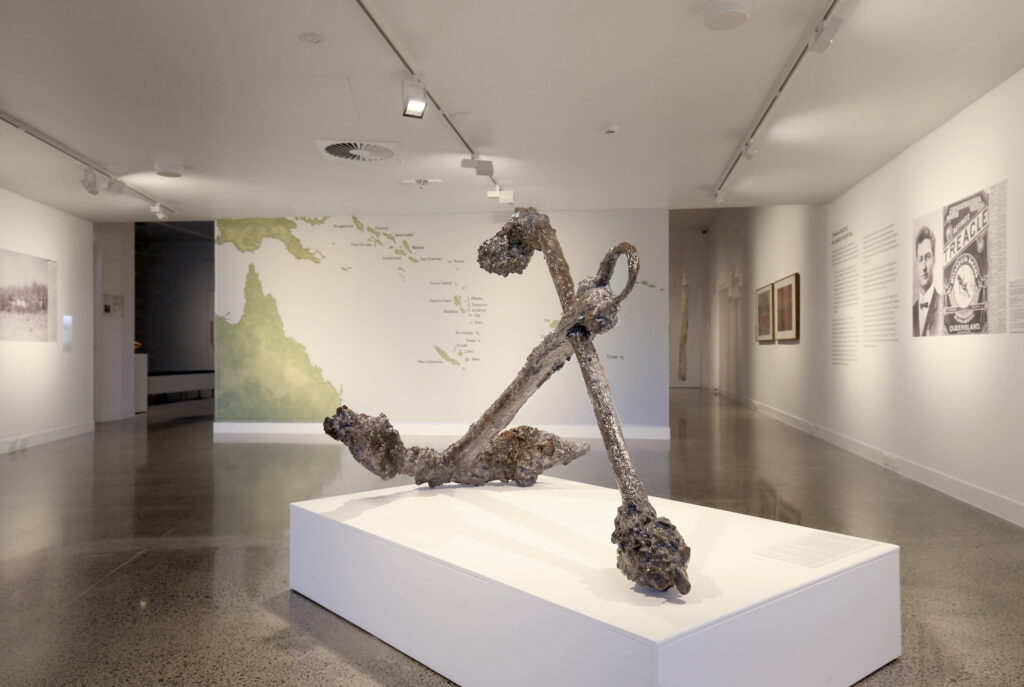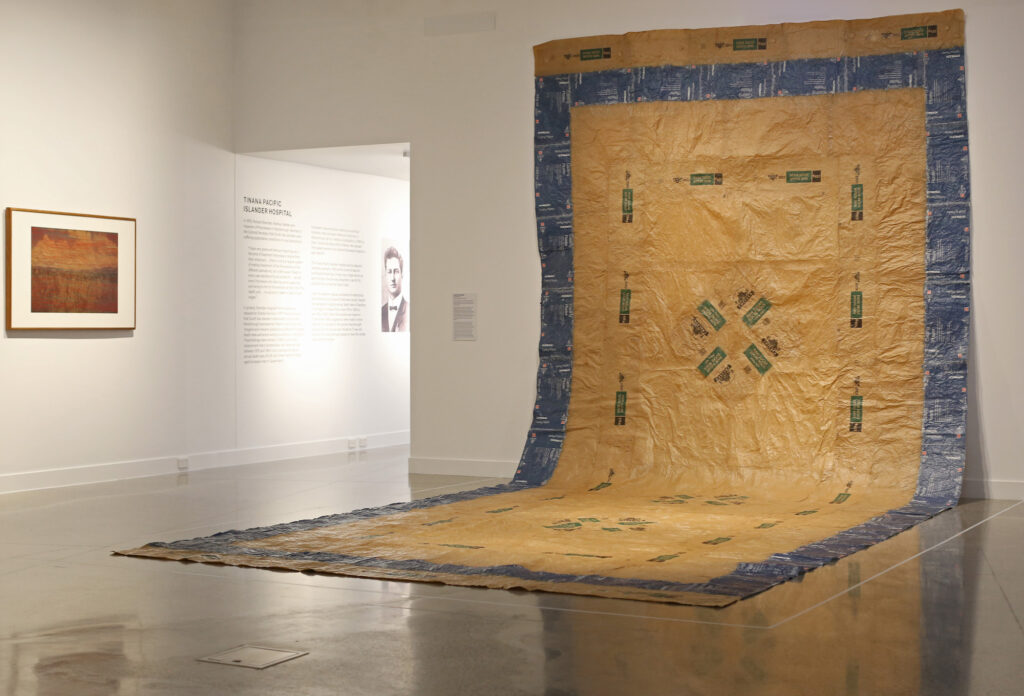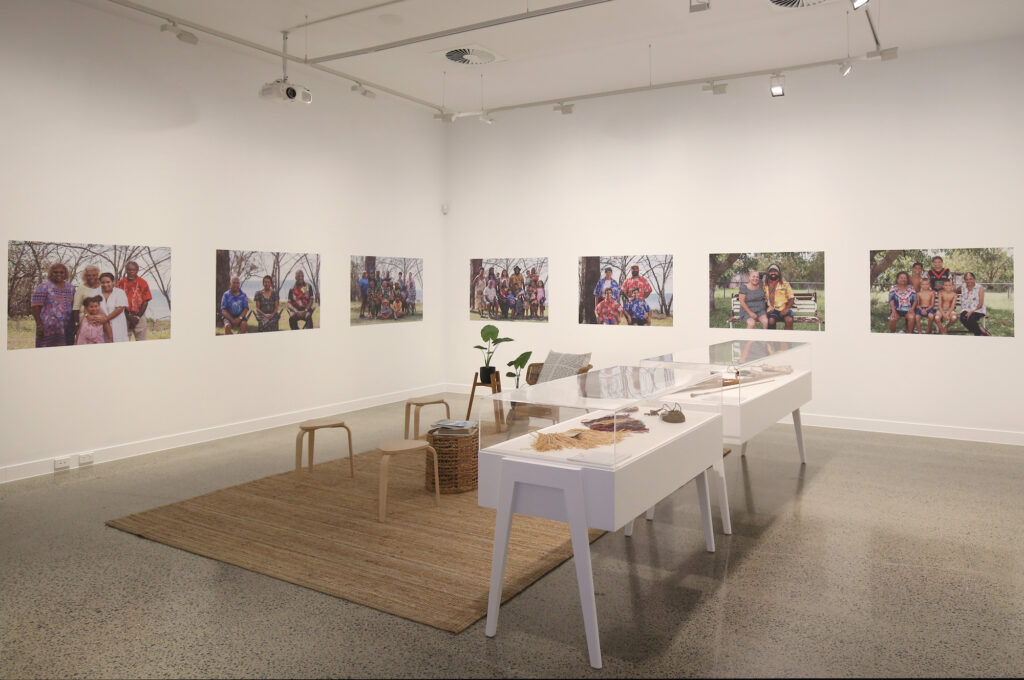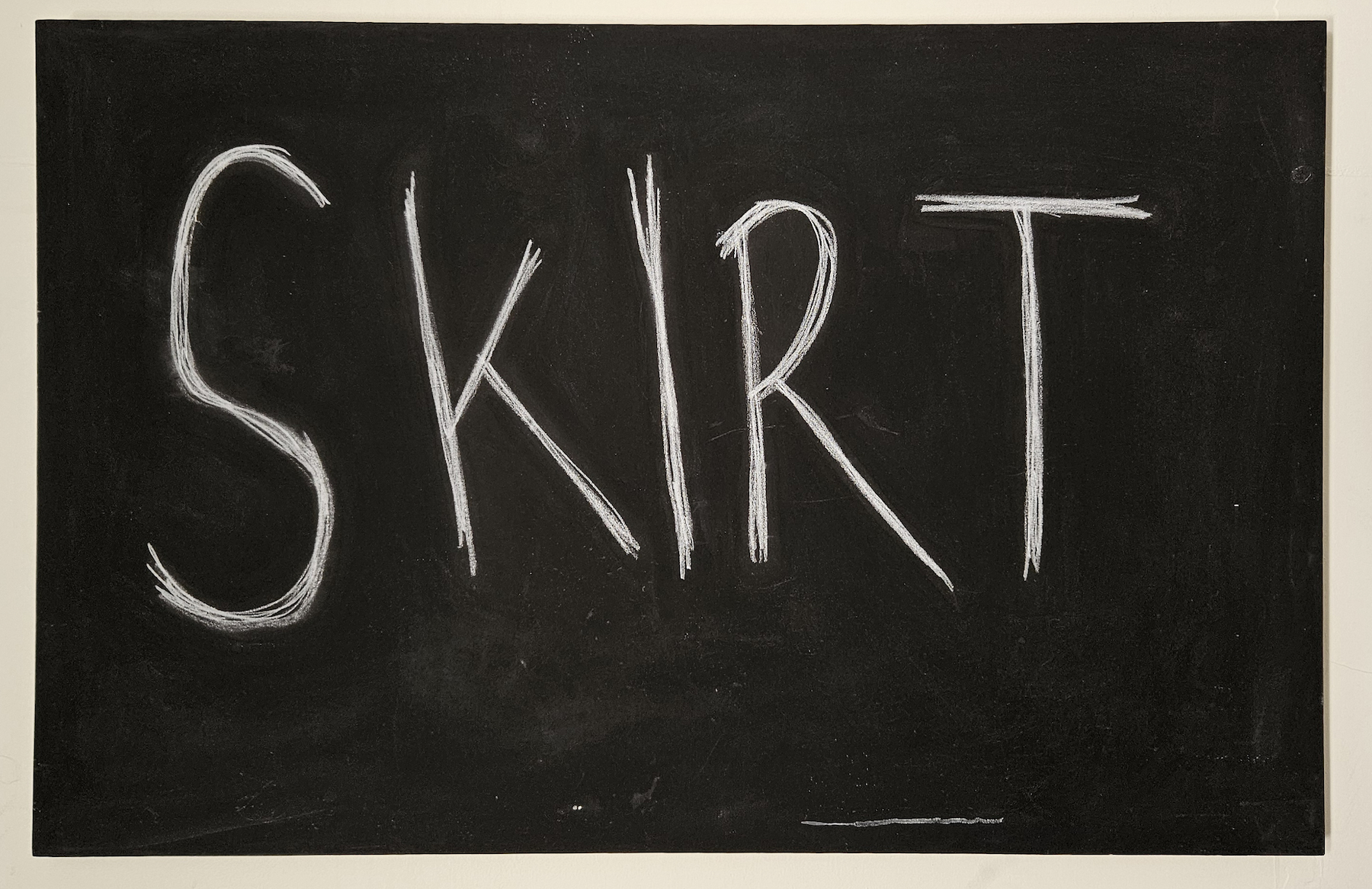
Queensland’s colonial history, like that of many colonies around the globe, is a story of imported and exploited labour. One of the darkest chapters of this story is the practice of blackbirding: a euphemism for sailing to the South Sea Islands and tricking, forcing, or coercing adults and children aboard as cheap labour for another country. At one point in the late nineteenth century, approximately 60,000 South Sea Islanders had arrived in what used to be known as the northern part of New South Wales, dispersed primarily to the sugar cane fields between the Gold Coast and Cairns.
Cane is an exhibition of artists whose families crossed the Pacific, Indian, and Atlantic Oceans in the name of the global sugar industry. Despite the international scope of their combined artworks, it’s an exhibition very much about its Australian location as well.
Cane successfully addresses the legacy of the nineteenth century Pacific slave trade through visual art alongside archival displays and community-led displays. A room preceding the artworks provides contextualisation via a museological display of state archived photographs, a detailed map, and historic newspaper articles about the presence of South Sea Islanders on the Fraser Coast, where Hervey Bay Regional Gallery is located. “It’s a history lesson not offered locally,” explained curator Llewellyn Millhouse in his exhibition floortalk. Many people in Hervey Bay, and other regional towns with significant South Sea Islander populations, are surprisingly unaware of the latter’s early arrival in Australia. “Even though this is a visual art gallery, the feedback from local South Sea Islander and wider community showed that this exhibition project was an important opportunity to foreground archival material and teach that history to more people.”

One of the first items in the display is a rusted, cast-iron anchor, salvaged from the Mary River in 2013. It is likely a piece of the Jason, a ship that carried 104 South Sea Islanders from their homes to Maryborough’s harbour in 1875. Tragically, only 22 made it to shore alive. The anchor is a physical connection to the many lives lost; a tangible connection to a brutal history.
Trinidad, like Queensland, profited greatly from the exploitation of displaced sugar cane workers’ lives and labour. In the single-channel video work Sweetness and Abundance Everywhere (2024), Luis Vasquez La Roche borrows the lyrics of Trinidad’s unofficial anthem, Trini 2 De Bone, by David Rudder. Amid sweeping drone footage of long-abandoned plantation manors and oral histories from its former workers, the song’s references to sweetness, femininity, and “all dis sugar [which] can’t be good for me” presents a mix of cultural resilience as well as the legacies of structural violence.
Sancintya Mohini Simpson, whose Indian family was indentured as labourers on South African cane farms, presents the moving short film Dhuwa (2020). Shots of the ocean open and close the work, with the rest set in the middle of a sugar cane harvest. It’s an intense and hasty burning, with damage done in a matter of a minutes, leaving the field’s frogs, insects, and snakes vulnerable as they escape the flames to birds of prey above. A person dressed in white steps through the burnt remains, gathering ash on their garment. Simpson studies this phenomena as a metaphor for the violence of colonisation and its imported farming practices on First Nations lands across the globe.
For Shivanjani Lal, a Fijian-Australian artist whose ancestry also leads back to India, threads are expressions of her family’s long history of movement. Lal associates feelings of personal and intergenerational loss with this movement. The blood-red colours of her threads, woven across found images of cane fields in Fiji, invite reflection upon the futures that were irrevocably shortened and altered due to blackbirding.

Jasmine Togo-Brisby’s nemasitse (barkcloth of Ni-Vanuatu) occupies a full wall and extends onto the gallery floor. The work is made from the contemporary packaging of CSR Limited. Once known as the Colonial Sugar Refining Company, CSR profited greatly from the exploitation of South Sea indentured labour in Australia, Fiji, and Mauritius. The work’s title, Monopoly, references CSR’s signed agreement with the Queensland government, which allowed them a monopoly on sugar refining in this state for over six decades. Togo-Brisby’s work is inspired by her Ni-Vanuatu ancestor’s connections to CSR Limited upon their forced arrival in Australia.

With the enforcement of the 1901 White Australia policy and mass deportations, the history of blackbirding was conveniently forgotten by many. However, the pride and passion of remaining communities has allowed for the story of Australian South Sea Islanders to be told through many creative forms by its diverse diaspora. The exhibition’s final room complements the anteroom’s history lesson by inviting viewers into the present day and place. Thanks to community consultant Keely Eggmolesse, who worked specifically on bringing local community into the planning of this project, contemporary Australian South Sea Islander culture is on show in the form of large photographic family portraits, Melanesian heirlooms, and oral histories on video. There is also mention of a very current campaign to install a local monument to South Sea cane workers. The exhibition’s message is clear with this final stage of the exhibition: the global condition of blackbirding across India, Fiji, Vanuatu, South Africa, and the Caribbean is also very local, and its history lives here in the present.
Emily Wakeling is an art writer and curator specialising in Japanese and Australian contemporary art. She is Curator of Rockhampton Museum of Art, Darumbal Country.



